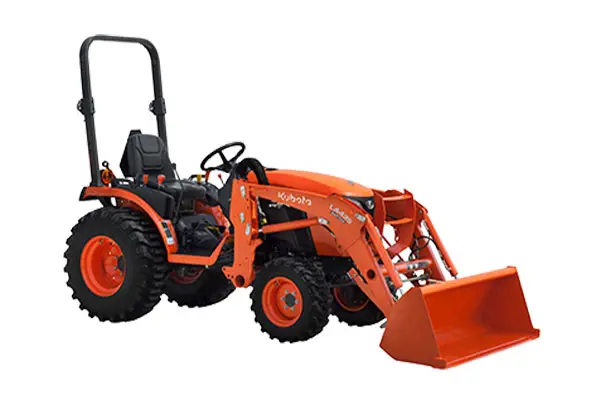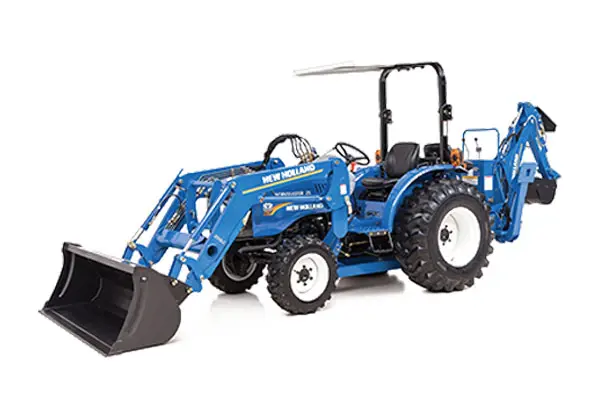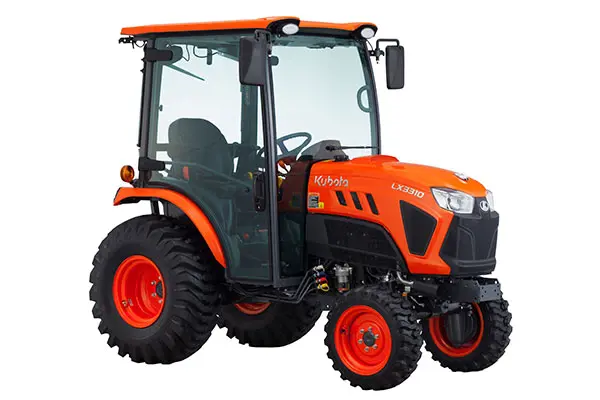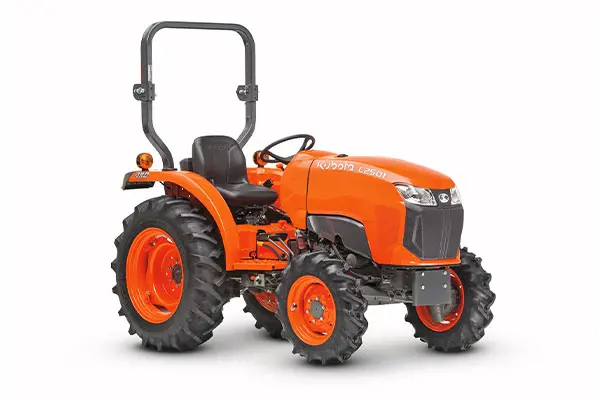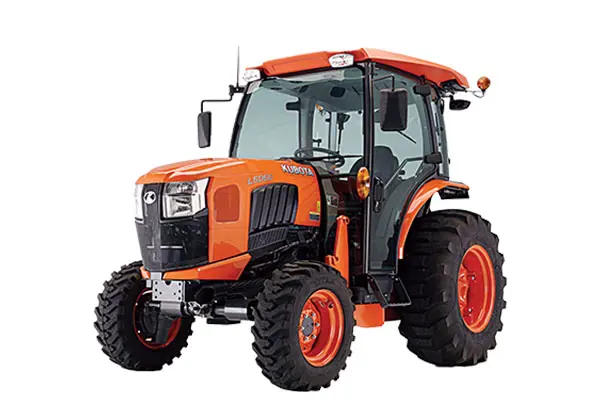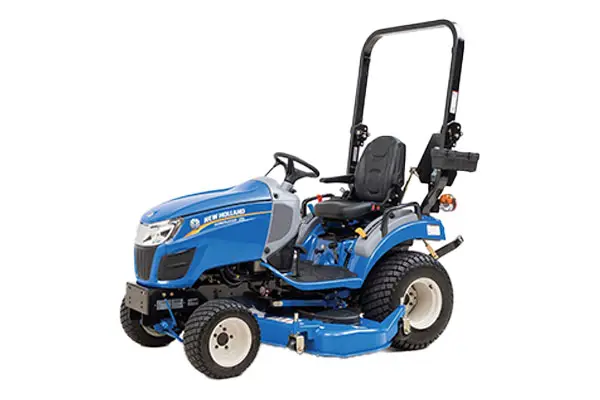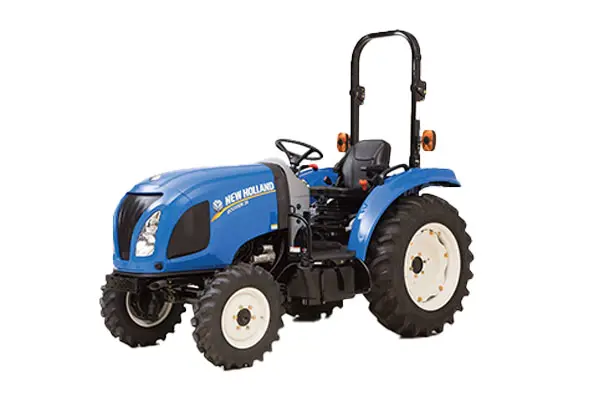20 -70 HP Base Tractor | Compact Tractor Buyers Guide Part #1
Neil: Neil from Messicks here with part one in a four-part series on a buyer's guide for a small tractor. We're going to be covering four major topics here, some things that might help you go through the shopping and buying process if you're looking for a piece of equipment. We're going to start today with picking out the base tractor that you buy. Follow-up videos here will cover how to configure that tractor, some of the accessories that you might want for a machine, and then the intricacies of financing, insurance, and extended warranty.
[music]
You would not believe the amount of variety of equipment that you will find in the equipment industry. Out here at our showroom, we have these large cabinets that are filled with drawer after drawer of literature and information on this equipment, trying to give you some information about it. If you're looking at Kubota tractors, my goodness, you got BXs, you got Bs, you got LXs. If you're looking at the New Hollands, you got the Compact Tractors, you got the Workmasters, you got the PowerStars. Where do you even begin? We're going to start here today of how we begin some of these conversations on dialing you into what is physically the right size tractor for the task that you have in mind.
When you dive into a manufacturer's product line and you see all this massive variety in tractors, there's variety for a reason. Part of our role here in a dealership is to go through and make sure that you're buying the right machine for the task that you have to do, and the variety of those tasks can range from anything. From mowing hay and doing farm equipment field work, or contractor work, or landscaper work, or homeowner residential work. There's wild variety in the tasks that these tractors can go out and do, and therefore, we end up with wild variety in the amount of models that there are to choose from, and that can be really overwhelming.
When we go through and have a conversation to try to dial in exactly what is the right tractor for you, I tend to like to start from the physical size of the machine and work from there. Many times, when somebody is looking at tractors on YouTube videos, or shopping on websites, or looking at those glossy brochures, they get the physical size of the tractor just wrong. They tend to not understand how physically big a machine is, and very often, somebody walks into one of our dealerships, looks at the model that they were coming in to see, and very often will come away with an impression of, "Oh, it's bigger," or "Oh, it's smaller than what I thought it was."
If your physical storage space has some constraints, if you're going to be pulling a tractor into a garage, or you've got a barn to keep something in, or an existing trailer that you need to be able to use to move the piece of equipment around, I would encourage you to start with the physical size of the machine that you can accommodate as one of the most important constraints on the tractor that's going to be right for you. After knowing the physical limitations of your tractor, the next thing that you want to know is what kind of tasks are you trying to accomplish, and how quickly do you want to get them done? What you're going to find is that virtually any tractor is capable of doing most tasks. It's not a whole lot of cases out here where one machine is going to be able to do something that another one just can't handle. A lot of it works out to just how fast are you going to get things done?
So we're going to want to know, if you've got three acres of grass to mow, what's your tolerance for how long you're willing to be out there? If you want to be able to cut three acres in an hour and be done, we need a, say, much bigger mowing implement than we do if you're willing to be out there for three hours. If you have loader work to do, if you're just moving dirt and mulch, it's no big deal. But if you want to get into doing some forestry work and lifting logs or moving boulders, the demands on that implement start to go up, and we're going to want to know those kinds of things.
You're going to seek out loaders that are going to lift those specific loads that you're looking for, or look at those mowing attachments, the tiller attachments, the machines that go behind the tractor that allow this thing to get out and work. Ultimately, your tractor is going to be your tool carrier, and so we're going to let the implements dictate what tractor is going to be carrying them, right? We're back into the tractor need from the implement. By this point, we should be able to drill down to the physical size tractor that we're going to need and can accommodate. Once you've gotten down to this physical size, you're going to find that there's a whole lot more variations. We're not done yet. A given size tractor is often offered under a lot of different model numbers. In this case, Kubota Standard L Series is offered in a 25 horsepower L2501, a 33 horsepower L3302, and a 39 horsepower L3902, the whole way from 25 to 39 horsepower.
We tend to be hyper-focused on horsepower, right? When you're buying a car, or a truck, or a piece of equipment, or whatever, everybody always knows how much horsepower that machine has. However, when you're in the tractor world, there's a lot more to the equation than just horsepower. That tends to be not the place that we start when sizing a tractor to somebody. We're usually a lot more focused on the physical size of the machine, its hydraulic capacities, before we start really worrying about the engine horsepower, because that only helps you with very specific implements, mostly the ones that are PTO-powered versus hydraulic.
When you're shopping for a tractor, we also often will have somebody come in and say, "I would like to buy a 30 horsepower tractor," and that can run the gamut of about 15 different models and variation for tractor sizes, and transmissions, and horsepower. So, start by working into the physical size tractor, and then pick the horsepower that's offered on that given size frame based upon the implements that you plan to run with that tractor. While we've got variation in the front half of the tractor for the engine horsepower that's offered on this frame, oftentimes there's also variation in the back half of the tractor in the transmission that's offered in the machine. Your smallest tractors are often only offered with hydrostatic transmissions. Gear drive variants are pretty uncommon in machines under 30 horsepower, but once you get above 30 horsepower, you'll start to see more offerings in terms of different transmissions.
Now, if you don't know what transmission you want, there's a 99% chance the right answer is hydrostatic. That is the right choice for most people, especially the ones that aren't real familiar with this equipment, because it's the easiest to operate, and it's the easiest to get the power out of the tractor. However, if you've run machinery for years, you're coming over from the construction equipment business, you might have a little bit more familiarity with things like gear drive transmissions, or power shifts, or some variants of CVTs. There's a lot of unique transmissions that are offered in some of these tractors that enable you to get more power to the ground than what you're able to with a hydrostatic. Keep that in mind if transmissions just start to cloud your eyes, they glaze over, and you don't know where you're going, migrate towards those hydrostatics. It is a vast majority of what's sold out there under 75 horsepower. But if you're over that 30 horsepower mark and you know how to run equipment, do know that you could get more power to the ground with other transmission types.
Driving a gear drive tractor is not like driving a gear drive car or truck because of the ground-engaging nature of these things, don't make that correlation. If you're going to opt for a gear drive model, make sure you have the chance to drive it first, make sure you're comfortable with the driving experience of how that machine is to run. I know from our YouTube analytics that more than likely right now, you are sitting at home watching videos about tractors, thinking about buying one, and dealerships are closed. What options do you have to learn about machines right now, other than sitting at home and listening to me talk? However, I can't underscore enough the importance of getting out, stopping at dealerships and walking around and looking at machines.
We mentioned the mythical 30 horse tractor before, that is such a common size for people to come in and look at. But when we look at something like horsepower, you could see machines like this B Series tractor here that's offered in 26 horsepower, this BX Series tractor here that also can be offered in 26 horsepower. This L Series machine back here can start at 35, this standard L back here we can sell in 25. You can have wildly different machines all falling within different horsepower ranges. So, starting from a point that you're able to walk beside a machine, see how big it is, see how you think it's going to meet your needs is so much a better approach than trying to buy a machine based upon the amount of horsepower.
By thinking through some of the things that we've discussed here, you should be able to go through and take a manufacturer's product catalog which might have as many as 200 different [unintelligible 00:09:21] in it-- If we look at all the variations of model numbers, and chassis sizes, and horsepower, and transmissions, and start to work that down to the point that we've narrowed down to that one base tractor. By looking at our physical constraints, the implements that we need to run, and the variation of that tractor for our horsepower demand and transmission selection, that should be able to narrow you down to that one tractor that you want to focus on.
Now, follow-up videos from here are going to discuss exactly how we configure that tractor, because you've got options now on this machine for things like tires, accessories, work lights, three-point hitch options. There's a lot of things that can help you accessorize that tractor to make sure it performs to your specification and the kind of comfort things that you're looking for. Then also, talking through the implements that you must have for that machine, and some of those financing and purchasing extended warranty conversations. Follow along in the YouTube series here, we'll help get you the information that you need to be educated when you walk into a dealership.
If you've got parts needs for machines you've already got, service that we can help with, or if you're shopping for a piece of equipment, give us a call here at Messicks. We're available at 800-222-3373, or online at meissicks.com.








